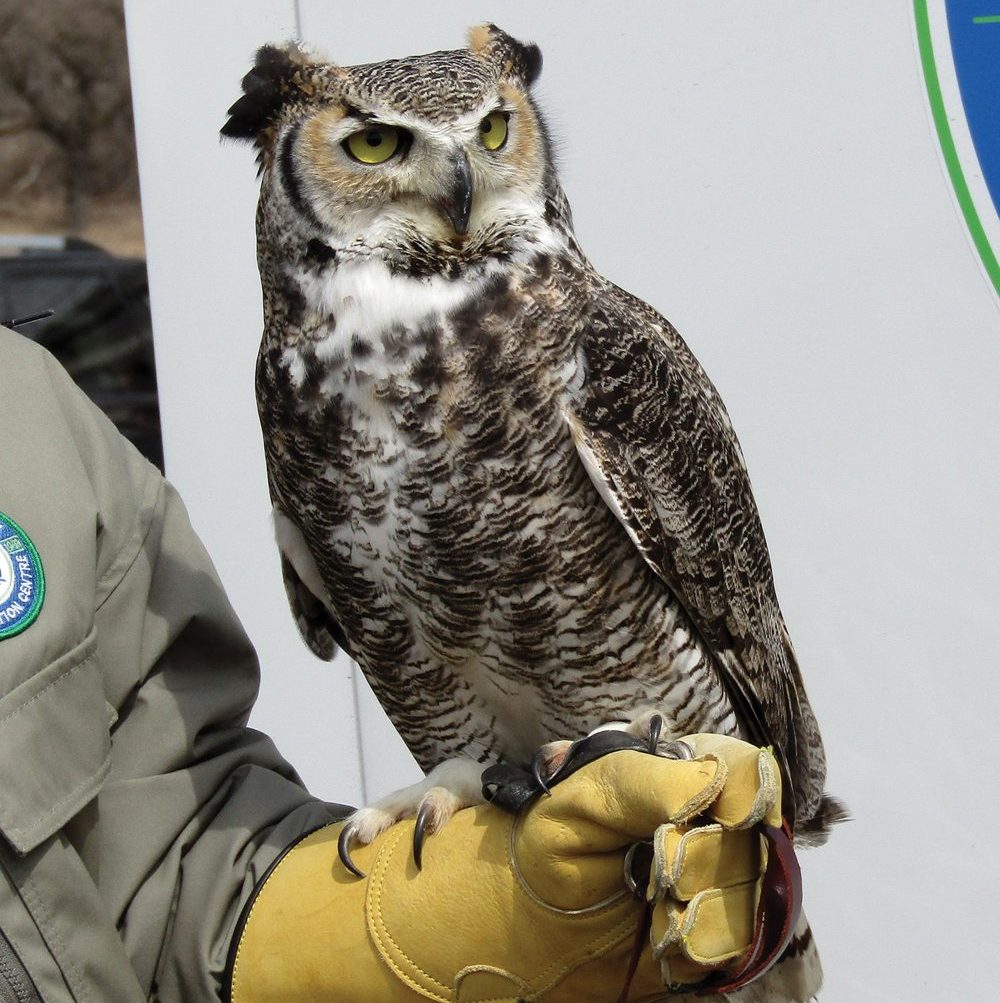The term bird irruptions (also known as eruptions), sounds like it might be something dangerous, but it just means a year when an unusually large number of a certain bird invades a region. This can be an exciting event for birders.
Some winters there may be a larger-than-usual number of snowy owls in the southern Prairies, or they may be noticed much farther south. This may be due to an excellent season in the North for hatching the young ones, or perhaps due to a shortage of food sources there. Snowy owls feed mainly on lemmings, which are cyclical, dying off every few years. When this happens, the owls often migrate south. Such was the case last winter when snowy owls irrupted far to the south. The northern U.S. states had hundreds of sightings. Some were seen as far south as Kansas and Missouri, while others were viewed along the eastern coast, even in New York City. Snowy owls were also widespread in coastal British Columbia. A December 2011 article from Vancouver said that 26 snowy owls were counted in the False Creek area one day.
Read Also

Mazergroup’s Bob Mazer dies
Mazergroup’s Bob Mazer, who helped grow his family’s company into a string of farm equipment dealerships and the main dealer for New Holland machinery in Saskatchewan and Manitoba, died July 6 from cancer.
So far this winter the number of snowy owls seems more typical. The type of bird irruption that is being experienced across North America involves several species, but particularly pine grosbeaks, redpolls, red crossbills, white-winged crossbills and red-breasted nuthatches. None of these birds are unusual here, but statistics from all across southern Manitoba show they are present in much larger numbers. It appears that the dry summer may have contributed to a widespread crop failure of fruiting and cone-bearing trees farther north, driving these birds out of their boreal-forest habitat.
The red-breasted nuthatch seems to have been exploding southward, with reports from nearly all the southern U.S. states, starting in early fall. It appears that last year was a particularly good one for the nuthatch with the result that more young ones were fledged. Then by late summer, the number of cones available wasn’t nearly enough, especially in Eastern Canada, and the southward migration began. Even Manitoba birders have benefited. My own backyard station in MacGregor is lucky to attract one red-breasted nuthatch a winter; this year there has been at least four regulars.
Redpolls are also particularly numerous in the province, with many backyard feeders reporting 15 to 20 regular visitors. One birder said he has a dozen pine grosbeaks gorging throughout the day at his feeding station, while mine has up to 10 red crossbills. (Crossbills are on the move throughout the U.S., too, as far south as Kansas and California.) Poor berry crops affected by the drought may have caused movement of the pine grosbeaks and Bohemian waxwings, while a poor crop of white birch and alder seeds may influence the redpoll irruption.
For birders such as myself, who make weekly counts for the Backyard Feeding Project, it’s been an interesting time. Last winter I struggled to count eight to 10 species over the two-day counting period, but this year I’ve had 12 to 14 species most weeks.
While bird migration is familiar and predictable, irruptions are generally unpredictable. This year’s irruptions should make for some interesting numbers when the annual Great Backyard Bird Count is held — February 15 to 18. If you would like to contribute information for this, check out the website at www.birdsource.org/gbbc/. Information from a year with irruptions is particularly valuable, as statistics are kept and examined to help determine why differences occur from year to year, and particularly as to how climatic changes might affect bird life.
Anyone interested in submitting more frequent reports might consider joining Project Feeder Watch. Information is available at http://www.birds.cornell.edu/pfw/.
Photos: DONNA GAMACHE


















